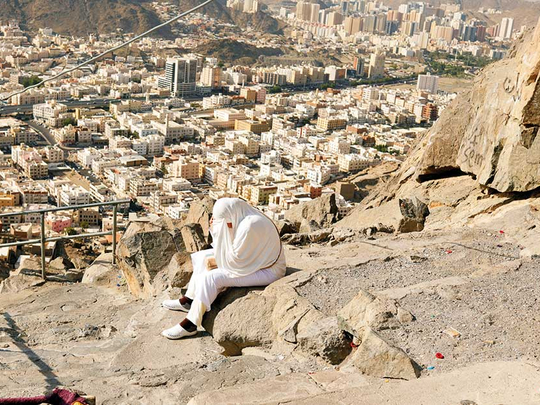
Makkah
Saudi Arabia is preparing to host the annual Haj beginning Sunday, as over 1.6 million Muslim faithful from abroad have arrived in the kingdom.
The pilgrimage represents one of the five pillars of Islam and is required of all able-bodied Muslims once in their life. In recent weeks, the faithful have arrived in Makkah from across the world, all chanting “Labayk Allahuma Labayk,” or “Here I am, God, answering your call. Here I am.”
The Haj offers pilgrims an opportunity to feel closer to God amid the Muslim world’s many challenges, including the threat of extremists in the Middle East after Daesh was beaten back in Iraq and Syria and the plight of Myanmar’s Muslim Rohingya minority.
“My feeling is indescribable to perform the Haj,” said Emad Abdul Raheem, an Egyptian pilgrim. “I also want to pray for all Muslim countries, for them to live free in all places, in Palestine and in Myanmar, in all places, in Afghanistan and in India.”
Men attending the Haj dress in only terrycloth, seamless white garments meant to represent unity among Muslims and equality before God. Women wear loose clothing, cover their hair and forgo makeup and nail polish to achieve a state of humility and spiritual purity.
Since arriving, many have circled the Kaaba in Makkah. The Kaaba represents the metaphorical house of God and the oneness of God in Islam. Observant Muslims around the world face towards the Kaaba during their five daily prayers.
Muslims believe the Haj retraces the footsteps of the Prophet Mohammad (PBUH), as well as those of the prophets Ebrahim and Esmail.
After prayers in Makkah, pilgrims will head to an area called Mount Arafat on Monday, where Prophet Mohammad delivered his final sermon. From there, pilgrims will head to an area called Muzdalifa, picking up pebbles along the way for a symbolic stoning of the devil and a casting away of sins that takes place in the Mina valley for three days.
At the Haj’s end, male pilgrims will shave their hair and women will cut a lock of hair in a sign of renewal for completing the pilgrimage. Around the world, Muslims will mark the end of Haj with a celebration called Eid Al Adha. The holiday, remembering Ebrahim’s willingness to sacrifice his son, sees Muslims slaughter sheep and cattle, distributing the meat to the poor.
While a holy, once-in-a-lifetime experience for pilgrims, the Haj is by no means an easy journey. The temperature in Makkah and Mina will be around 42 degrees Celsius. Pilgrims walk between 5 to 15km a day. Long lines and even longer waits can strain even the most patient as they weave through the throngs of people.
For Saudi Arabia, the Haj is the biggest logistical challenge the kingdom faces. The kingdom has spent billions of dollars on security and safety measures, particularly in Mina, where some of the Haj’s deadliest incidents have occurred.











